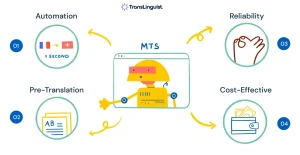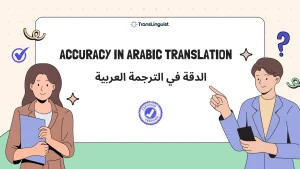As we step into 2025, the future of interpretation is being reshaped by groundbreaking advancements. The arrival of interpreting technology trends in 2025 is changing the way everyone consumes, provides, and relies on interpretation. If you are a Language Service Provider (LSP), healthcare provider, or event organizer, staying ahead is imperative.
From AI-based interpretation to deep healthcare system integrations, the future of interpreting technology rests with seamless access, easy experience, and the priceless value of human empathy. In what follows, we consider three general language interpretation tech trends shaping the new age of communication.
EHR Integration: Interpreting at the Heart of Healthcare
Perhaps one of the most groundbreaking interpreting technology trends for 2025 is integrating interpreting services into Electronic Health Record (EHR) systems natively. Traditionally, providers have toggled between applications, exchanged third-party links, and coped with broken workflows just to bring interpreters into clinical dialogue. That’s changing in a hurry.
As technology for remote interpreting continues to improve in 2025, more healthcare platforms will follow. For both hospitals and LSPs, this means streamlined processes and better patient outcomes for those with low English proficiency.
AI in Interpreting: Strong Support, Not Substitution
There is no doubt that AI for interpreting purposes is advancing quickly. We saw 2024 AI technologies that were capable of transcribing, summarizing, and even live speech interpretation in real-time at multilingual events. All these advancements are revolutionizing remote simultaneous interpreting (RSI), such that event organizers can easily connect global masses with minimum resistance.
And yet, as impressive as the progress of AI is, its limitations are equally crucial. In high-complexity fields such as medical and legal translation, where sensitivity to culture, ethics, and context takes priority, human interpreters cannot be replicated. That’s why AI is increasingly being positioned as a co-pilot, rather than a substitute, improving productivity but allowing ultimate decision-making to lie with experts.
In 2025, expect AI to be embedded more deeply within on-demand environments with capabilities like automated meeting summaries, in-meeting transcription, and multilingual captions, especially in mass or mundane settings. The future is collaborative, not competitive.
The Enduring Value of Human Interpreters
As AI headlines roar, it is the human touch of interpretation that finally sets quality apart. The most significant conversations concerning life, liberty, and education require more than accuracy. They require trust, sympathy, and tact. It is where human interpreters excel.
To counter technological disruption, the interpreting industry is evolving in new and exciting directions. AI literacy forms part of interpreter education programs, and best practice templates and ethical guidelines are being developed in order to safeguard the central role of human interpreters in communication.
Language services companies are also stepping up, counseling their clients as to when AI technology is the optimal solution for a task and when human judgment is a necessity. At the same time, researchers are exploring large language models (LLMs) in order to better understand how AI can augment, not supplant, interpreters as high-quality, culturally responsive caregivers and teachers.
The future doesn’t lie with people or computers; it lies in the right balance that brings out the best of both.
What This Means for 2025 and Beyond
The future of interpreting is not only digital, it’s smart, integrated, and human. The market for interpreting in 2025 will be defined by:
- Smart integrations with EHR and enterprise systems.
- AI-supported support tools that enhance interpreter workflows.
- Increased acknowledgment of the specific human role in communication.
We believe at TransLinguist that technology exists to empower, not replace, human connection. Though we welcome emerging language interpretation technology trends, we’re committed to professional interpreters who build sense, empathy, and clarity in every interaction.
Whether you’re an interpreter looking to the next step or a provider seeking to maximize your business, it’s time to harness this compelling change.
Ready to stay ahead of the interpreting technology of 2025?
TransLinguist is poised to bring you into the future of smart software, the AI revolution, and the lasting power of the human voice. Learn how TransLinguist can help you step into the future of language access.
Whether you want to find out more about AI in interpreting services or look for the best remote interpreting software for 2025, get in touch our specialists are prepared to guide you through it and help you overcome the language barrier.
FAQs
How can I get ready for interpretation's future?
To future-proof interpretation, have your ear to the ground regarding new technologies, such as AI-driven tools, remote interpreting platforms, and integration with EHRs. Upskilling is the solution. Interpreters must maintain AI literacy, remote collaboration tool skills, and domain-specific knowledge in their respective fields of work (the healthcare, legal, and education sectors in particular). For service providers, partnering with tech-friendly platforms such as TransLinguist ensures smooth adaptation to upcoming client demands.
What prospects does the field of interpretation have for the future?
The number of interpreters is increasing rapidly; the same is true of the demand for interpreters in the private and public sectors, which include business, government, law and medicine. As they get embedded into digital ecosystems (like telehealth or global conferencing platforms) and gain growing appeal in hybrid models (human + AI), interpreters themselves are getting much more strategic. Interpreters who will not fear embracing technology and will be aware of cultural and contextual strings have a promising future.
What are the main obstacles that the area of interpretation must overcome?
Preserving ethical AI use, data privacy, and quality. While maintaining the human element in communication, interpreters must adjust to technology.
How is interpretation being altered by AI?
AI is transforming interpretation with live transcription, multilingual subtitles in real time, automated summaries and more powerful interpreter tools. But AI is not replacing the human interpreters; it is augmenting them. Especially in high-stakes situations (such as medical or legal interpreting), human judgment cannot be replaced. AI is a productivity enabler, which then allows interpreters to concentrate on culturally sensitive, empathetic communication.
What patterns exist in the interpretation of delivery methods?
Delivery is going hybrid. In-person, over-the-phone (OPI), video remote interpreting (VRI), and remote simultaneous interpreting (RSI) all are changing. There's a sharp transition towards platforms that provide converged, on-demand, and multilingual support through effortless user experiences.



